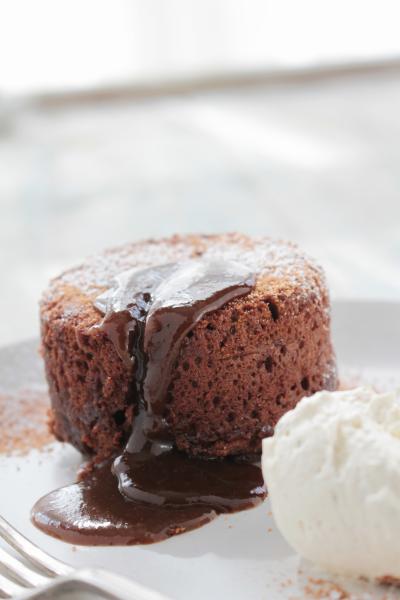Many American women (say 50 percent) report craving chocolate around the onset of menstruation. But that doesn't seem to be true for women in other countries. So, although cravings have been seen as biological urges, the question arises as to why the biology differs in different countries/cultures. Or does it?
Drs Julia M. Hormes and Martha A. Niemiec from the State University of New York at Albany investigated this question by having a diverse group of undergraduate women respond to a series of questionnaires about the frequency of their cravings for chocolate, and their level of acculturation.(1) The women were American (101), second generation American (93), or foreign-born (81). Those identified as "American" were born in the U.S. and English was their native language. Second generation women were born in the U.S. but grew up speaking a foreign language or were bilingual.
Level of acculturation was assessed by two different acculturation scales, with the second generation women being more highly acculturated to the dominant American culture than the foreign born ones. The foreign-born women represented most continents, with most coming from Asia and North America. And there were a wide variety of native languages represented as well.
The participants were queried about their cravings for chocolate — if they reported having such cravings they were followed up with questions about when they typically experienced those urges. The results are shown in the table below. The foreign born women were significantly less likely to ever crave chocolate than were the other two groups (p = 0.02), and also were significantly less likely to crave chocolate in association with their menstrual cycles (p - 0.003). Importantly, the investigators reported no differences between these three groups with respect to the prevalence of non-chocolate food cravings.
| American | 2nd Generation | Foreign Born | |
| Ever craved chocolate (%) | 91.9 | 92.1 | 80.0* |
| Regular chocolate craving (%) | 36.0 | 34.8 | 40.0 |
| Menstrual chocolate craving (%) | 32.7 | 40.9 | 17.3* |
Based on these data, the investigators concluded:
Menstrual craving ... was least prevalent in “foreign-born” women, and associated with greater levels of U.S. acculturation and lower native cultural competency. Results thus provide compelling support for the view of menstrual chocolate craving as a potentially culture-bound syndrome.
Thus, they posit that acculturation is responsible for viewing menstruation as a perceived trigger for or cause of chocolate cravings, "perhaps in an effort to justify consumption of an otherwise 'forbidden' food."
1) Hormes JM, Niemiec MA (2017) Does culture create craving? Evidence from the case of menstrual chocolate craving. PLoS ONE 12(7): e0181445. https://doi.org/10.1371/journal.pone.0181445




